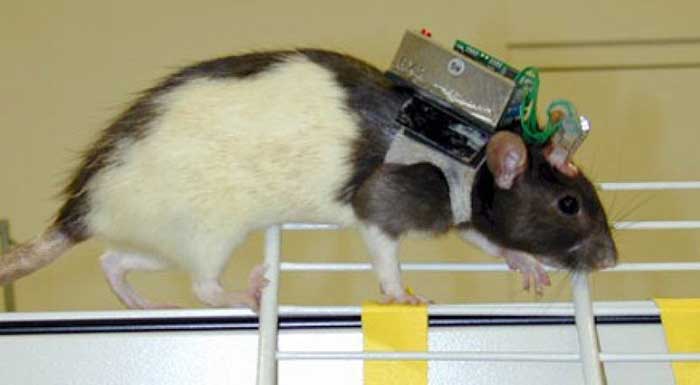
New Delhi: Indian defence scientists have created the first batch of “rat cyborgs” in their laboratory with the ultimate aim of providing a live video feed to security forces from inside a building in case of a 26/11-type scenario, in which the enemy has taken over a premise, but troops are bereft of a sitrep.
The project developed by a bunch of young researchers from Hyderabad, rat cyborgs are nothing but standard laboratory rodents, in whose brains the scientists have installed an electrode that can receive signals from outside. A tiny camera would be strapped in its back for capturing live images.
Once released inside a building, the rat cyborgs, armed with such tools, can go anywhere in an inconspicuous manner, climb a wall and hide from the enemy using their natural ability to camouflage. Scientists are in the process of perfecting the way in which rodents can be manoeuvred using external signals.
“Our objective is intelligence gathering by manoeuvring the rats with electronic commands through semi-invasive brain electrodes,” P Shiva Prasad, director of DRDO Young Scientist Laboratory (DYSL) in Hyderabad said while making a presentation on asymmetric technologies at the 108th session of the Indian Science Congress.
This is one of the emerging strategic technologies which DYSL has decided to pursue as an alternative to more conspicuous robots that have limitations in terms of mobility. The rodents offer a more flexible option.
“In phase II, we will go non-invasive. Instead of inserting an electrode in the brain, a tiny PCB with a laser trans-receiver will be fitted above the skull. The animal will be controlled from outside using a remote control. The rat would respond to the instructions it receives and move accordingly to the right or left,” Prasad said. The researchers, in the first phase, are collecting the baseline data.
The rat-cyborg technology was proposed by a group of Chinese scientists in 2019 using the brain-machine interface technology that seeks to control a rodent’s brain by an external stimulus. The Chinese team used six such rats for an experiment in which the creatures were commanded to take turns – first simple ones and subsequently more complex ones with tight turns, multiple levels and a specific prescribed path.
Overall the rat cyborgs handled the experiment well with improved control over time and two of the rats performed flawlessly, as per the Chinese study that was published in a reputed peer-reviewed journal.















